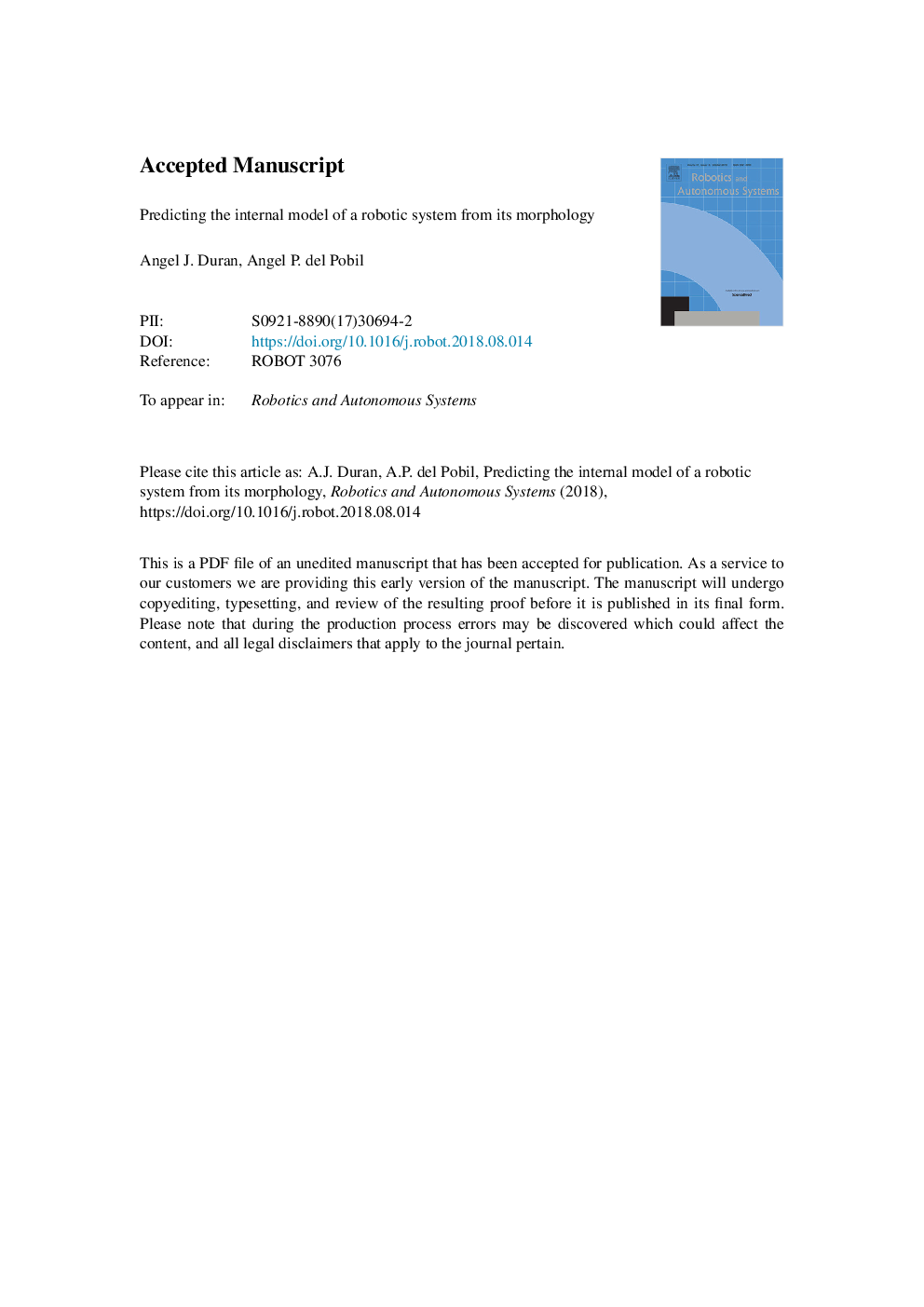| Article ID | Journal | Published Year | Pages | File Type |
|---|---|---|---|---|
| 11023970 | Robotics and Autonomous Systems | 2018 | 21 Pages |
Abstract
The estimation of the internal model of a robotic system results from the interaction of its morphology, sensors and actuators, with a particular environment. Model learning techniques, based on supervised machine learning, are widespread for determining the internal model. An important limitation of such approaches is that once a model has been learnt, it does not behave properly when the robot morphology is changed. From this it follows that there must exist a relationship between them. We propose a model for this correlation between the morphology and the internal model parameters, so that a new internal model can be predicted when the morphological parameters are modified. Different neural network architectures are proposed to address this high dimensional regression problem. A case study is analyzed in detail to illustrate and evaluate the performance of the approach, namely, a pan-tilt robot head executing saccadic movements. The best results are obtained for an architecture with parallel neural networks. Our results can be instrumental in state-of-the-art trends such as self-reconfigurable robots, reproducible research, cyber-physical robotic systems or cloud robotics, in which internal models would available as shared knowledge, so that robots with different morphologies can readily exhibit a particular behavior in a given environment.
Related Topics
Physical Sciences and Engineering
Computer Science
Artificial Intelligence
Authors
Angel J. Duran, Angel P. del Pobil,
